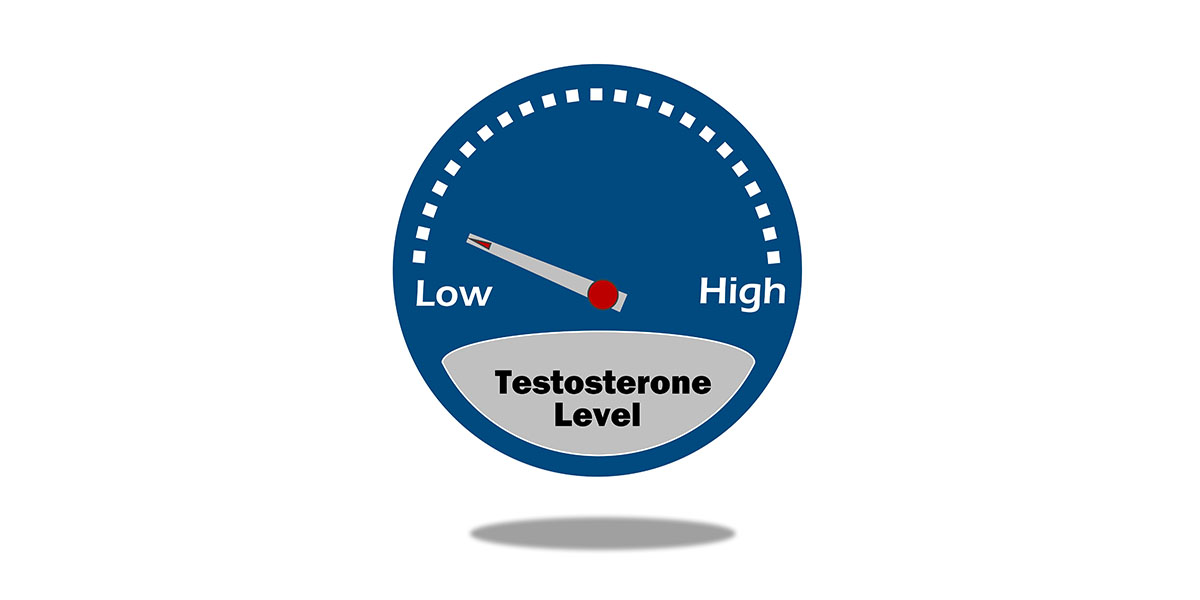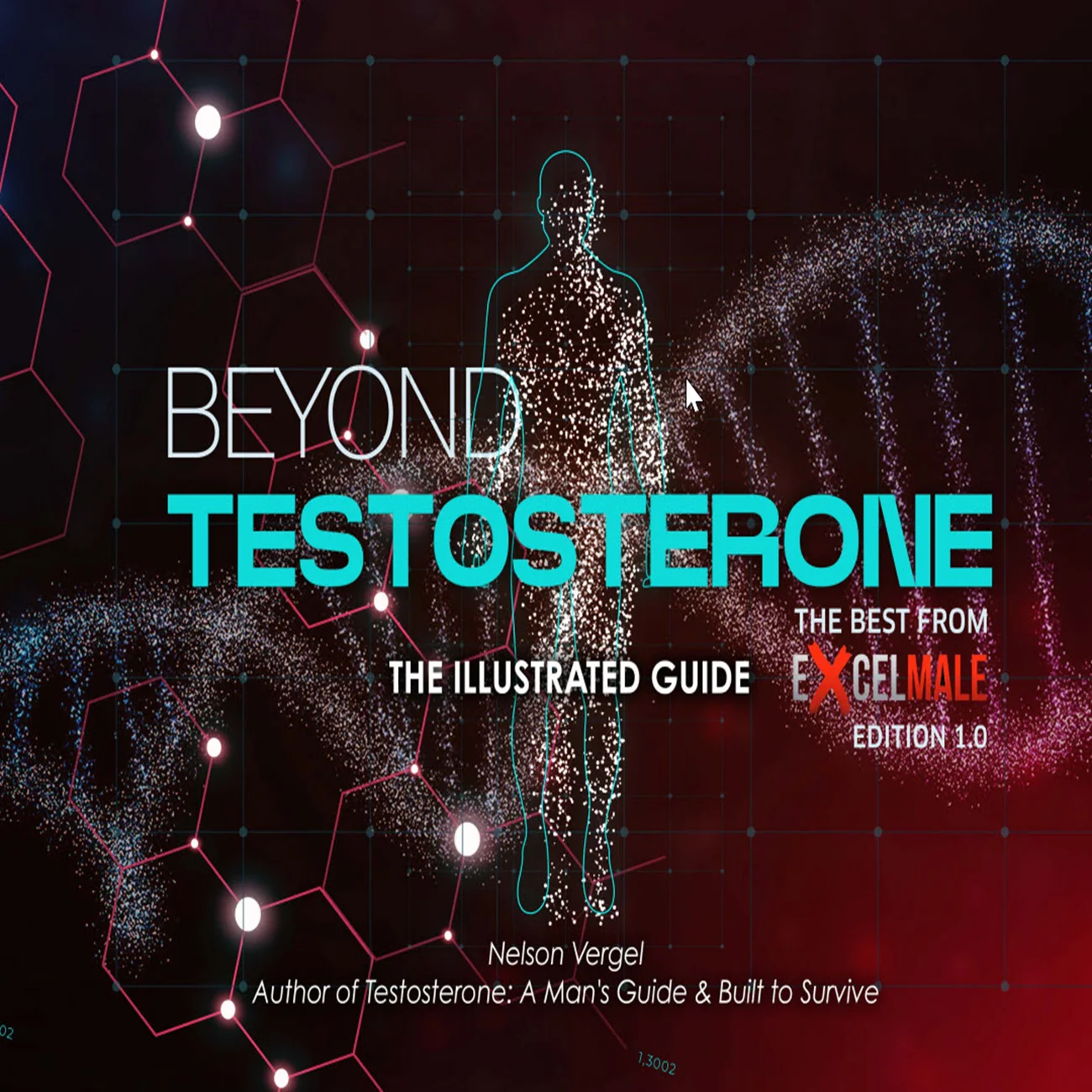Briefing Document: Optimizing Hematocrit Control in Testosterone Therapy
Source: Excerpts from "From Phlebotomy to Formulation: Optimizing Hematocrit Control in Testosterone Therapy - Excel Male TRT Forum"
1. Executive Summary
Testosterone Replacement Therapy (TRT) offers significant benefits for hypogonadal men, including improved body composition, metabolic function, and mental well-being. However, a notable side effect is the increase in hematocrit (HCT) and hemoglobin levels, driven by testosterone's stimulation of erythropoiesis. Elevated hematocrit, specifically erythrocytosis, can lead to serious cardiovascular events such as blood clots, heart attack, stroke, or pulmonary embolism.Traditionally, severe polycythemia in TRT patients led to treatment cessation, but this causes a recurrence of original symptoms. Recent research highlights that the method of testosterone administration significantly influences the extent of HCT increases, suggesting that choosing the right formulation can minimize these side effects. While injectable formulations (e.g., cypionate and enanthate) are more prone to supraphysiological increases in testosterone and subsequent HCT elevation, short-acting preparations like nasal sprays, topical gels, and oral formulations tend to result in lower, more physiological testosterone levels and weaker HCT increases. Indirect methods to boost testosterone, such as Clomiphene citrate and Human chorionic gonadotropin (HCG), appear to have minimal impact on HCT.
Monitoring pre-TRT HCT levels is crucial, as they contribute to elevations during therapy. The largest HCT increase typically occurs within the first year of TRT, with a slow upward trend over 20 years. Current guidelines recommend considering intervention (e.g., dose reduction, phlebotomy, or change in formulation) if HCT exceeds 54%, though recent data suggests mortality risk reduction in HCT levels of 50%-52% compared to lower ranges. Hydration status must be considered, and high HCT readings should be confirmed with a second blood test.
2. Key Themes and Important Information
2.1. The Mechanism of TRT-Induced Erythrocytosis:- Exogenous testosterone stimulates erythropoiesis, the production of red blood cells.
- "Testosterone increases EPO production in the kidneys, increasing red blood cell and erythroferrone production in bone marrow, leading to decreases in hepcidin and increased iron uptake, triggering an increase in red blood cells."
- This process involves the roles of hepcidin, iron sequestration and turnover, erythropoietin formation, bone marrow stimulation, and genetic factors.
- Risks: Red blood cell overproduction can lead to blood clots and severe sequelae such as heart attack, stroke, or pulmonary embolism. The "Testosterone Therapy in Men With Androgen Deficiency Syndromes" guideline (2010, updated 2018) recommends against starting TRT in patients with elevated hematocrit levels.
- Benefits: Increased red blood cells can improve oxygen transport, potentially enhancing performance. For hypogonadal patients with anemia, TRT might be beneficial for both testosterone and red blood cell restoration. Some recent data even suggests a "mortality risk reduction in the higher end of HCT (50%–52%) as compared to lower HCT (46%–49%)."
- "We can see that there are major differences among testosterone preparations with regard to hematocrit increases."
- Injectable formulations (Enanthate/Cypionate): Tend to cause "significantly higher levels as compared to testosterone patches" and are "especially susceptible for supraphysiological increases in serum testosterone, potentially leading to elevated HCT levels."
- Frequency of administration matters: "Dosage levels of 200 mg every 2 weeks lead to hematocrit >54% in 8% of the patients, whereas 100 mg every week led to hematocrit >54% in 1% of the patients."
- Short-acting preparations (Nasal spray, Topical gel, Oral formulations): "Appear to result in lower increases in serum testosterone, usually within physiological ranges, often leading to weaker elevations in HCT."
- Indirect methods (Clomiphene citrate, Human chorionic gonadotropin): "Seem to have very few side effects on HCT."
- Pre-TRT Levels: "Pre-TRT hemoglobin and hematocrit levels contribute to hematocrit elevations, therefore it is very important to monitor these values during TRT in patients with high preTRT hemoglobin and hematocrit levels."
- Timeline of Increase: The "largest increase in hematocrit happens in the first year after start of TRT, followed by ups and downs, but trending to slowly increase up to 20 years."
- Discontinuation Threshold: The cut-off for TRT discontinuation due to high HCT "ranges from 52%–54%." A 54% threshold "might be appropriate" given recent data on mortality risk.
- Confirmation of High Readings: "A high hematocrit reading should be confirmed in a second blood test, ensuring the patient is in a well hydrated state, before action is taken." Dehydration can cause temporary elevation.
- Treatment for Elevated HCT:Phlebotomy
- Medication
- Change of testosterone type/formulation
- A meta-analysis on testosterone formulations and HCT increases "did not include nasal formulations and did not include comparable numbers of studies for each formulation."
- A study suggesting reduced mortality with higher HCT levels (up to 52%) has limitations due to its "registry design" and "relatively small sample." It states, "Large scale, placebo-controlled studies with large cohort over prudential period is needed to robustly confirm these results."
3. Implications and Recommendations for Healthcare Professionals and Patients
- Individualized Treatment: The choice of testosterone preparation is critical for minimizing HCT side effects. Short-acting, frequently administered formulations are generally preferred for patients prone to HCT increases.
- Thorough Monitoring: Regular monitoring of hemoglobin and hematocrit levels, especially in the first year of TRT and for patients with high pre-TRT levels, is essential. Hydration status should always be considered when interpreting HCT results.
- Proactive Management: Healthcare professionals should be prepared to manage elevated HCT through dose adjustments, changing testosterone formulations, or considering phlebotomy.
- Patient Education: Patients should be informed about the risks of erythrocytosis, the importance of adherence to monitoring schedules, and the different treatment options available for managing HCT.
- Consider Indirect Methods: For men aiming to increase testosterone while minimizing HCT risks, exploring options like Clomiphene citrate or HCG should be discussed with a healthcare provider.
Figure 1. Effects of exogenous testosterone on red blood cell production. Testosterone increases EPO production in the kidneys, increasing red blood cell and erythroferrone production in bone marrow, leading to decreases in hepcidin and increased iron uptake, triggering an increase in red blood cells.
Abstract
Introduction
Testosterone replacement therapy is gaining more and more popularity among hypogonadal men. The positive effects on body composition, metabolic functions, and mental well-being can improve the quality of life of many men. However, testosterone can also trigger several side effects, including increases in hematocrit and hemoglobin levels. Exogenous testosterone tends to increase erythropoiesis. The testosterone-induced increase in red blood cells can increase performance via improved transport of oxygen to the body. However, red blood cell overproduction can cause blood clots and severe sequelae such as heart attack, stroke, or pulmonary embolism. These side effects need to be closely monitored in testosterone replacement therapy (TRT) patients. Traditionally, cessation of TRT was recommended for patients with severe polycythemia. However, cessation of TRT can lead to the recurrence of symptoms experienced before TRT. Fortunately, recent innovations in testosterone preparations allow a treatment with less side effects on hematocrit levels.
Objectives
This review focuses on highlighting novel methods to treat hypogonadism while minimizing side effects related to hematocrit levels.
Methods
We identified relevant articles using PubMed and Google Scholar searching for specific terms from 2000-2024.
Results
Elevations in hematocrit levels triggered by testosterone therapy seem to be controversial, some studies advocate noninferior effects as compared to placebo while others found adverse side effects on cardiovascular health. However, the way of administration of testosterone seems to strongly influence the extent of hematocrit increases and can therefore be minimized by choosing the right testosterone preparation.
Conclusion
Depending on the route of administration, testosterone replacement therapy can lead to significant increases in hematocrit and potential cardiovascular incidents. On the other hand, for hypogonadal patients with anemia, testosterone replacement therapy might be beneficial not only for restoring healthy testosterone levels but also red blood cells.
The mechanism by which TRT-induced erythrocytosis occurs is due to the respective roles of hepcidin, iron sequestration and turnover, erythropoietin formation, bone marrow stimulation, and genetic factors.6
A recent meta-analysis showed that all types of testosterone formulations lead to significant increase in hematocrit levels, with intramuscular testosterone enanthate/cypionate leading to significantly higher levels as compared to testosterone patches.7 However, this meta-analysis did not include nasal formulations and did not include comparable numbers of studies for each formulation. The goal of this review is to summarize the newest results in this field, especially regarding the nasal and oral formulations, and give healthcare professionals and patients optimal therapy guidelines.
* Endogenous testosterone levels and hematocrit
* Exogenous testosterone levels and hematocrit and hemoglobin
* Exogenous testosterone levels, hematocrit and blood pressure
Differences among testosterone preparations
1) Injectable testosterone preparations
a) Enanthate/cypionate
b) Undecanoate
2) Oral testosterone preparations
3) Testosterone gel preparations
4) Nasal testosterone preparations
5) Subcutaneous testosterone pellet
We can see that there are major differences among testosterone preparations with regard to hematocrit increases. In general, short acting preparations that are frequently administered and lead to small increases in serum testosterone, seem to have the least side effects, whereas infrequent administration of high dose long-acting preparations seem to have more marked increases in hematocrit. Patel et al., (unpublished data, 2020), even recorded differences in the administration frequency for testosterone cypionate. Dosage levels of 200 mg every 2 weeks lead to hematocrit >54% in 8% of the patients, whereas 100 mg every week led to hematocrit >54% in 1% ofthe patients.
Risk factors for TRT-induced hematocrit increases
Pre-TRT hemoglobin and hematocrit levels contribute to hematocrit elevations, therefore it is very important to monitor these values during TRT in patients with high preTRT hemoglobin and hematocrit levels.
Timeline for TRT-induced hematocrit increases
One study showed that the largest increase in hematocrit happens in the first year after start of TRT, followed by ups and downs, but trending to slowly increase up to 20 years.29
Other methods to treat low testosterone while keeping hematocrit levels within range
1) Clomiphene citrate
2) Human chorionic gonadotropin
Treatment for elevated hematocrit levels
* Phlebotomy
* Medication
* Change of testosterone type
* Potential benefits of TRT induced elevated hematocrit levels
Conclusion
TRT can lead to drastic increases in HCT, potentially leading to cardiovascular diseases. In an update published in 2018 to the “Testosterone Therapy in Men With Androgen Deficiency Syndromes” guideline (2010), the authors recommend against starting TRT in patients with elevated hematocrit levels.53
Injectable testosterone formulations such as cypionate and enanthate are especially susceptible for supraphysiological increases in serum testosterone, potentially leading to elevated HCT levels. Short acting formulations such as nasal spray, topical gel, and oral formulations appear to result in lower increases in serum testosterone, usually within physiological ranges, often leading to weaker elevations in HCT. Indirect methods to increase testosterone such as HCG or clomiphene seem to have very few side effects on HCT. The cut-off number of HCT for discontinuation of TRT, ranges from 52%–54%. However, recent data suggests mortality risk reduction in the higher end of HCT (50%–52%) as compared to lower HCT(46%–49%). Therefore a 54% threshold for TRT discontinuation might be appropriate.
FAQs:
1. What is hematocrit and why is it important in the context of testosterone replacement therapy (TRT)?
Hematocrit (HCT) measures the percentage of red blood cells in your blood. It is important in TRT because testosterone, whether produced naturally or administered exogenously, increases the production of red blood cells (erythropoiesis). While an increase in red blood cells can improve oxygen transport and performance, an overproduction can lead to complications such as blood clots, potentially causing serious events like heart attack, stroke, or pulmonary embolism. Therefore, closely monitoring hematocrit levels is crucial for patients on TRT to mitigate these risks.2. How does testosterone increase red blood cell production?
Testosterone increases erythropoiesis through several mechanisms. It stimulates the kidneys to produce more erythropoietin (EPO). EPO, in turn, acts on the bone marrow to increase the production of red blood cells and erythroferrone. This process also leads to a decrease in hepcidin, which then increases iron uptake, further fueling red blood cell production. Genetic factors also play a role in this complex interplay.3. Are all testosterone formulations equally likely to increase hematocrit levels?
No, different testosterone formulations have varying effects on hematocrit levels. Generally, short-acting preparations that are administered frequently and result in smaller, more stable increases in serum testosterone tend to have less pronounced side effects on hematocrit. In contrast, infrequent administration of high-dose, long-acting preparations, such as intramuscular testosterone enanthate/cypionate, are associated with more significant increases in hematocrit. Nasal sprays, topical gels, and oral formulations typically lead to lower increases in hematocrit, often keeping levels within physiological ranges. Indirect methods to increase testosterone, like Human Chorionic Gonadotropin (HCG) or clomiphene citrate, also tend to have minimal effects on hematocrit.4. What are the risk factors for TRT-induced hematocrit increases, and when do these increases typically occur?
Pre-TRT hemoglobin and hematocrit levels are significant risk factors; patients with higher initial values are more prone to elevated hematocrit during TRT. Therefore, continuous monitoring of these values is essential for such patients. The most substantial increase in hematocrit generally occurs within the first year of starting TRT. After this initial period, levels may fluctuate but tend to gradually increase over a long term, potentially up to 20 years.5. What are the potential consequences of elevated hematocrit due to TRT?
Elevated hematocrit, also known as erythrocytosis or polycythemia, can lead to red blood cell overproduction, increasing blood viscosity. This heightened viscosity can significantly raise the risk of blood clots, which in turn can cause severe cardiovascular incidents such as heart attacks, strokes, and pulmonary embolisms. Traditionally, severe polycythemia might have led to the cessation of TRT, but newer strategies aim to manage these levels while allowing patients to continue therapy.6. What is the recommended hematocrit threshold for managing TRT, and how is it determined?
Current clinical guidelines often recommend a hematocrit cut-off for discontinuation or modification of TRT ranging from 52% to 54%. However, recent data suggest that a threshold of 54% might be more appropriate. Some studies indicate a mortality risk reduction in men with hematocrit levels in the higher end of the physiological range (50%-52%) compared to those with lower levels (46%-49%). It is crucial that any high hematocrit reading is confirmed with a second blood test, ensuring the patient is well-hydrated, before any treatment modifications are made.7. What are the management options for elevated hematocrit levels in patients on TRT?
Several strategies can be employed to manage elevated hematocrit levels in TRT patients:- Phlebotomy: Therapeutic phlebotomy (blood donation) is a common method to reduce red blood cell count.
- Medication: Certain medications may be used, though the source does not specify which ones.
- Change of Testosterone Type/Formulation: Switching to a different testosterone preparation, especially a shorter-acting or less potent one (e.g., nasal spray, gel, or oral), can help minimize hematocrit increases.
- Dosage Adjustment/Frequency: Adjusting the dosage or increasing the frequency of administration (e.g., lower dose more frequently) can lead to more stable testosterone levels and less erythrocytosis.
- Indirect Methods: For some patients, using alternative therapies to increase testosterone, such as clomiphene citrate or human chorionic gonadotropin (HCG), can be considered as they tend to have fewer side effects on hematocrit.
8. Can TRT be beneficial for patients with low testosterone and anemia?
Yes, for hypogonadal patients who also suffer from anemia, testosterone replacement therapy can offer a dual benefit. In addition to restoring healthy testosterone levels and improving associated symptoms (body composition, metabolic functions, mental well-being), the erythropoietic effect of testosterone can help increase red blood cell counts, thereby addressing the anemia. This makes TRT a potentially beneficial treatment for this specific patient population.
Last edited by a moderator:














